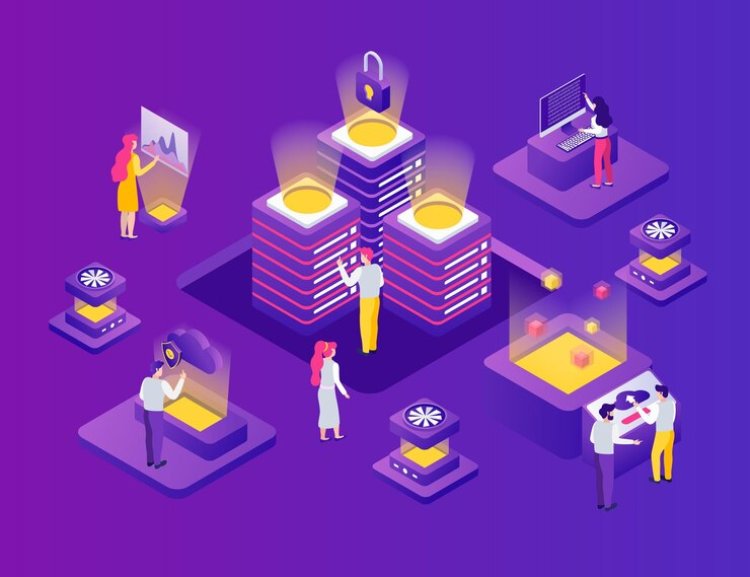How Can Blockchain Enhance Data Security and Privacy in AI?
Blockchain enhances AI data security by decentralizing storage, ensuring immutability, and enabling transparent, privacy-preserving data transactions.

In the ever-evolving landscape of artificial intelligence (AI), data security and privacy are paramount concerns. As AI systems become more prevalent and powerful, they increasingly rely on vast amounts of data for training, inference, and decision-making. This reliance, however, introduces significant challenges related to data security, privacy breaches, and trustworthiness of AI models. Blockchain technology offers a promising solution to address these challenges by providing a decentralized, transparent, and secure framework for managing data in AI applications.
Understanding the Challenges
Before delving into how blockchain can enhance data security and privacy in AI, it's crucial to understand the primary challenges faced:
-
Data Privacy Concerns: Personal and sensitive data used in AI models must be protected from unauthorized access and misuse.
-
Data Integrity: Ensuring the integrity and authenticity of data throughout its lifecycle is critical to maintaining the trustworthiness of AI models.
-
Centralized Data Silos: Traditional data storage methods often involve centralized databases prone to single points of failure and vulnerabilities.
-
Lack of Transparency: AI models' decision-making processes are often opaque, making it difficult to verify the fairness and accountability of their outputs.
Blockchain: A Solution for Enhanced Security and Privacy
Blockchain technology, popularized by cryptocurrencies like Bitcoin and Ethereum, offers several key features that can significantly enhance data security and privacy in AI:
1. Decentralization
Blockchain operates on a decentralized network of nodes that collectively validate and record transactions in a transparent and immutable ledger. This decentralized nature eliminates the need for a single trusted authority, reducing the risk of data tampering and unauthorized access. In AI applications, decentralization can enable distributed data storage and processing, enhancing security by eliminating central points of failure.
2. Immutable Data Records
Once data is recorded on a blockchain, it becomes virtually immutable. Each transaction or data entry is cryptographically linked to the previous one, creating a transparent and tamper-proof audit trail. This feature ensures data integrity throughout its lifecycle, from collection to usage in AI training and inference. AI developers and users can verify the authenticity and provenance of data, mitigating the risk of data manipulation or fraud.
3. Enhanced Data Privacy
Blockchain enables granular control over data access and sharing through smart contracts. These self-executing contracts enforce predefined rules regarding data usage and access permissions, reducing the risk of unauthorized data exposure. AI models can securely access only the necessary data inputs without exposing sensitive information, thereby preserving user privacy and complying with regulatory requirements like GDPR.
4. Transparent Auditing and Accountability
The transparency of blockchain technology facilitates comprehensive auditing of AI algorithms and data sources. Stakeholders can trace the entire data lifecycle, from its origin to its incorporation into AI models and subsequent outputs. This transparency promotes accountability in AI decision-making processes, enabling stakeholders to identify biases, errors, or unethical practices and take corrective actions.
5. Consensus Mechanisms
Blockchain consensus mechanisms, such as Proof of Work (PoW) or Proof of Stake (PoS), ensure agreement among network participants regarding the validity of transactions or data entries. This consensus mechanism enhances the reliability of data stored on the blockchain, further bolstering the security and trustworthiness of AI applications relying on blockchain-managed data.
Case Studies and Applications
Several industries are already exploring blockchain's potential to enhance data security and privacy in AI:
-
Healthcare: Blockchain enables secure and interoperable health data exchange while maintaining patient privacy and data integrity.
-
Finance: Blockchain-based platforms facilitate secure transactions and identity verification, protecting financial data from fraud and unauthorized access.
-
Supply Chain: Blockchain enhances supply chain transparency by tracking the provenance and authenticity of goods, reducing counterfeiting and ensuring product quality.
Challenges and Considerations
While blockchain offers promising solutions for enhancing data security and privacy in AI, several challenges must be addressed:
-
Scalability: Blockchain networks must scale to handle the volume of data generated by AI applications without compromising performance.
-
Regulatory Compliance: Ensuring compliance with data protection regulations and standards across jurisdictions remains a complex issue.
-
Integration Complexity: Integrating blockchain with existing AI infrastructure and legacy systems requires careful planning and technical expertise.
Conclusion
Blockchain technology holds immense potential to transform how data security and privacy are managed in AI applications. By leveraging its decentralized architecture, immutability, and transparent auditing capabilities, blockchain can mitigate risks associated with centralized data storage and enhance trust in AI systems. As industries continue to adopt AI at scale, integrating blockchain solutions will be crucial in building secure, privacy-preserving AI ecosystems that prioritize user trust and regulatory compliance. Also, OpenLedger leverages blockchain to provide a sovereign data infrastructure for AI, ensuring decentralized, verifiable, and secure data management to empower more reliable AI models.
In summary, blockchain is not just a technological innovation but a foundational framework for creating a more secure, transparent, and accountable AI future. Its adoption promises to reshape data management practices in AI, paving the way for safer, more ethical, and resilient AI applications.

 Ezra Adam
Ezra Adam 





